| 11 September |
• yesterday • tomorrow |

Carlo Spinola
Born to the Italian nobility in a family that originated in Genoa. Studied at Nola, Italy, under his uncle Cardinal Filippo Spinola. Joined the Jesuits in Nola in 1584. Ordained in 1594. Missionary to Japan in 1594. It took three tries to actually reach the island, but he worked there for 18 years. Imprisoned and abused for his faith and his works in 1618. Spent four years living in a cage, bribing the guards with his food to obtain the necessities to conduct Mass. Martyred.
c.1565 at Madrid, Spain
slowly burned to death on 10 September 1622 at Nagasaki, Japan
7 May 1867 by Pope Pius IX
Father, how sweet and delightful is it to suffer for Jesus Christ! I have learned this better by experience than I am able to express, especially since we are in these dungeons where we fast continually. The strength of my body fails me, but my joy increases as I see death draw nearer. O what a happiness for me, if next Easter I shall sing the heavenly Alleluia in the company of the blessed! - Blessed Charles
Oh, if you had tasted the delights with which God fills the souls of those who serve him and suffer for him, how would you condemn all that the world can promise! I now begin to be a disciple of Jesus Christ, since for his love I am in prison, where I suffer much. But I assure you, that when I am fainting with hunger, God hath fortified me by his sweet consolations, so that I have looked upon myself as well recompensed for his service. And though I were yet to pass many years in prison, the time would appear short, through the extreme desire which I feel of suffering for him, who even here so well repays our labours. Besides other sickness, I have been afflicted with a continual fever a hundred days without any remedies or proper nourishment. All this time my heart was so full of joy that it seemed to me too narrow to contain it. I have never felt any equal to it, and I thought myself at the gates of paradise. - Blessed Charles
Meanwhile, by night and day, we confirm our souls by exercises of piety, we chastise our bodies by scourging, haircloths, and other like mortifications; and what constitutes our greatest consolation, we minister at the altar daily. And it has surely been by a special providence of God, that vestments and other requisites for the holy sacrifices were introduced unseen by the guards, after we had been at first for several months deprived of them and unable to refresh ourselves with that heavenly bread of angels.
For my own part I am overjoyed at this special benefit of God, accomplishing the desire which chiefly brought me hither, and I esteem it above the splendor of all fleeting dignities. And justly, for Saint Paul, after being once imprisoned triumphed more in the glory of his chains and bonds, than in his very apostleship, calling himself 'Bound in the Lord.' I blush for shame when I think how by no merit of mine, I have obtained this great grace; how God, having before so many holy persons who have cultivated this vineyard with such admirable zeal, has cast his eyes on me, the last of all in the gifts of nature and merit.
I, who can aver that I now begin to be a disciple of Christ amid the greatest pain and confinement of prison, even when my strength seemed failing from hunger alone, I was always refreshed by such delights of consolation, that I deemed all my sufferings undergone in the divine service richly rewarded. Were I still to pass several years in this dungeon, the time would seem to me short in my intense desire of suffering for His love, who so lavishly rewards the labors of this life and makes even torture itself sweet and desirable. Yet God is to be served chiefly for himself alone, for He is the fountain of all goodness, and merits all our devotion without any hope of reward. - Blessed Charles
https://catholicsaints.info/blessed-charles-spinola/
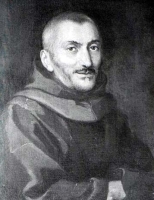
• Bonaventure of Riudoms
• Bonaventura Gran
• Fra Bonaventure of Barcelona
• Miguel Baptista Gran Peris
24 November (Riudoms, Spain)
The only child in a farm family, Francisco married at age 18, but became a widower just sixteen months later. He then followed a call to religious life, and Franciscan friar at the convent of Sant Miquel d'Escornalbou, making his religious profession on 14 July 1641 and taking the name Bonaventura. Over the next 17 years, he was assigned to convents in Mora d'Ebre, Figueres, la Bisbal d'Empordà and Terrassa where he served variously as cook, porter, beggar and infirmarian, and was known for his quiet, pious devotion to work, prayer and Franciscan spirituality. In 1658 he was sent to the area of Rome, Italy, to promote a return to strict observance of the Franciscan Rule; he founded four monasteries in the region. He was assigned to houses in Aracaeli and Capranica, and served as porter at Saint Isidore's College. In 1662 he founded the Riformella, a reform movement of retreats and spiritual meditation for his brother friars to bring them back to the original Franciscan spirituality; his writings about the "Retreats" received pontifical approve from Pope Innocent XI. Over the years he served as advisor to many, including Pope Alexander VII, Pope Clement IX, Pope Clement X and Pope Innocent XI.
• 24 November 1620 on Carrer de la Butxaca (Pocket Street) in Riudoms, Tarragona, Catalonia (in modern Spain) as Miguel Baptista Gran Peris
• the street where he was born has been re-named in his honour
• 11 September 1684 at the friary of Saint Bonaventure on the Palantine Hill in Rome, Italy of natural causes
• buried at the friary
• relics transferred to Riudoms, Spain in 1972
• relics enshrined in the tabernacle chapel in the church of Saint James the Apostle in Riudoms
• relics are processed through the town of Riudoms each 24 November during a celebratory feast devoted to Blessed Bonaventure
• 10 June 1906 by Pope Pius X
• his beatification miracles included the healing of a woman in 1790 from injuries sustained in a fall from a horse
• his beatification miracles included the healing of a woman in 1818 who had fallen into a coma for three days following childbirth, and was brought back to consciousness through prayer and the imposition of a relic of Blessed Bonaventure
Riudoms, Spain
https://catholicsaints.info/blessed-bonaventure-of-barcelona/
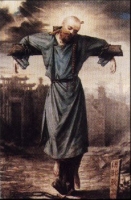
John Gabriel Perboyre
One of eight children born to Pierre Perboyre and Marie Rigal. At age 16 he followed his brother Louis to the seminary, and joined the Congregation of the Mission of Saint Vincent on Christmas Day 1818. Ordained in Paris on 23 September 1825. Professor of theology. Seminary rector. Assistant director of novices.
His brother died on a mission to China, and John Gabriel was asked to replace him. In March 1835 he sailed for China, and began his mission in Macao in June, 1836. A widespread persecution of Christians began in 1839, the same year England had attacked China. Father John Gabriel was denounced to the authorities by one of his catachumens, arrested, tried on 16 September 1839, tortured by hanging by his thumbs and flogging with bamboo rods, and condemned to death on 11 September 1840. Martyr. The first saint associated with China.
6 January 1802 at Le Puech, near Mongesty, Cahors diocese, southern France
lashed to a cross on a hill named the "red mountain", then strangled with a rope on 11 September 1840 at Ou-Tchang-Fou, China
2 June 1996 by Pope John Paul II
O my Divine Savior,
Transform me into Yourself.
May my hands be the hands of Jesus.
Grant that every faculty of my body
May serve only to glorify You.
Above all,
Transform my soul and all its powers
So that my memory, will and affection
May be the memory, will and affections
Of Jesus.
I pray You
To destroy in me all that is not of You.
Grant that I may live but in You, by You and for You,
So that I may truly say, with Saint Paul,
"I live - now not I - But Christ lives in me.
- Saint John Gabriel
https://catholicsaints.info/saint-jean-gabriel-perboyre/
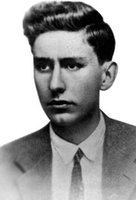
Born to a poor family, the son of Ramón Roig Fuente and Maud Diggle Puckering. Educated by the La Salle Brothers, and then the Piarists. Student of Blessed Ignasi Casanovas Perramón and Blessed Francisco Carceller Galindo. To find work, his family moved to El Masnou, Spain, and while still in school, Joan worked as a store clerk and on a factory floor. Member of the Federación de Jóvenes Cristianos de Cataluña (Federation of Young Christians of Catalonia in El Masnou; he was soon entrusted with running the branch of the group devoted to children under 14. Known as a pious young man, Joan would spend hours lost in Eucharistic Adoration. Friend of Blessed Pere Tarrés i Claret. Entrusted with the Eucharist to bring Communion to the house-bound. During the Spanish Civil War, when the anti–Christian militia came to 'arrest' him for his faith, he quickly ate the Hosts to prevent desecration, hugged his mother, and left with his captors. He died forgiving and preaching to his killers. Martyr.
12 May 1917 in Barcelona, Spain
• shot multiple times over the night of 11 to 12 September 1936 in the cemetery of Sant Coloma de Gramenet, Barcelona, Spain
• interred in a chapel in the parish of San Pere de Masnou, Catalonia, Spain
• 7 November 2020 by Pope Francis
• beatification recognition celebrated in the Basilica of Sagrada Familia in Barcelona, Spain
https://catholicsaints.info/blessed-joan-roig-i-diggle/
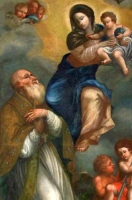
• Elijah Bozzetta
• Elijah Espeleota
• Elia, Elias
Born to the wealthy nobility, the son of Peitro Bozzetta and Leonzia de Leontini. At age 18, to avoid an arranged marriage and answer a call to religious life, Elijah left home to become a pilgrim to Rome, Italy. He became a Basilian monk at Grottaferrata outside Rome, returned briefly to Reggio Calabria, and then he and a fellow monk name Arsenio travelled to Patras, Greece for further study. While they were away, Muslim Saracens invaded their home region, killing and enslaving Christians. When Elijah returned to Italy, he withdrew from populated areas to lived as a hermit in a cave near Melicuccà, Italy with two fellow monks, Cosma and Vitale; the word Speleota is Greek for “inhabitant of caves”. Word of their wisdom and holiness soon spread, and pilgrims regularly visited the caves for spiritual direction and advice.
863 in Reggio Calabria, Italy
• 11 September 960 at the Aulon monastery in Calabria, Italy of natural causes
• buried in the cave where he had dug his own grave with his hands
• on 2 August 1747, Antonio Germano unearthed his bones; the sight of them cured a serious medical ailment with which Antonio suffered
https://catholicsaints.info/saint-elijah-speleota/
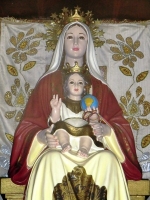
• Nuestra Señora de Coromoto
• Virgin of Coromoto
• Virgen de Coromoto
• 2 February
• 8 September
8 September 1652 at Guanare, Portuguesa, Venezuela
1950 by Pope Pius XII
Commemorates the apparition of the Blessed Virgin Mary to Coromoto, leader of the indigenous people in the forests near Guanare, Venezuela. Our Lady told the chief and his wife to go to the Catholic missionaries in the city, learn the faith, and receive Baptism; Coromoto shot an arrow at her, she vanished, and left behind a piece of paper with her portrait. The entire tribe, except for Coromoto himself, converted to Christianity; he was afraid of losing his standing in the tribe. Tradition says that he fled from the Baptism ceremony into the forest where he was bitten by a poisonous snake; this could be allegorical.
Venezuela (chosen by the bishops of Venezuela on 1 May 1942; approved by Pope Pius XII on 7 October 1944)
https://catholicsaints.info/our-lady-of-coromoto/
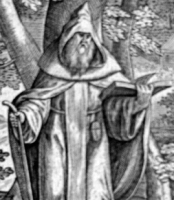
• Paphnutius of Egypt
• Paphnutius the Confessor
• Pafnucius...
Hermit. Spiritual student of Saint Anthony the Abbot. Monk. Bishop in Egypt. During the persecutions of emperor Galerius Maximinus, Paphnutius had his right eye torn out, his left knee crippled, and was sent to work in the mines, all as punishment for his faith. Rescued by emperor Constantine the Great in 313, Paphnutius resumed his pastoral duties and worked against Arianism heresy. Participated in the Council of Nicea, and afterwards worked to spread the Nicene Creed. Attended the Council of Tyre in 335 where he again had to oppose Arianism.
https://catholicsaints.info/saint-paphnutius/
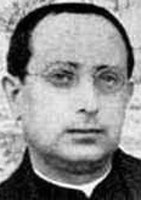
Studied at the seminary of Valencia, Spain, and ordained a priest in the archdiocese of Valencia on 12 June 1921. Co-adjutor of Adzaneta de Albaida. Co-adjutor in Santa María de Onteniente. Noted for his work in youth ministry. Martyred in the Spanish Civil War for the crime of being a priest.
13 October 1896 in Ontinyent, Valencia, Spain
shot on 11 September 1936 in Genovés, Valencia, Spain
11 March 2001 by Pope John Paul II
https://catholicsaints.info/blessed-jose-maria-segura-panades/
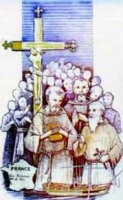
Baptised at the age of two days. Priest in the diocese of Soissons, France. Imprisoned on a ship in the harbor of Rochefort, France and left to die during the anti-Catholic persecutions of the French Revolution. One of the Martyrs of the Hulks of Rochefort.
2 May 1739 in Terrasson, Dordogne, France
11 September 1794 aboard the prison ship Deux-Associés, in Rochefort, Charente-Maritime, France of gangrene
1 October 1995 by Pope John Paul II
https://catholicsaints.info/blessed-francois-mayaudon/
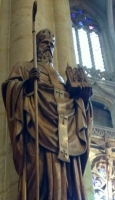
Sardot, Serdon
Son of Saint Rusticus of Lyon and Hiberie de Limoges; nephew of Saint Viventiolus of Lyon; uncle of Saint Nicetius of Lyon; father of Saint Aurelian of Arles. Bishop of Lyon, France from 549 to 552. Presided over the Council of Orleans in 549. Advisor to King Childebert I.
487
• 11 September 552 at Paris, France of natural causes
• buried in the church of the Apostles (later renamed the church of Saint Nicholas), Lyon, France
https://catholicsaints.info/saint-sacerdos-of-lyon/
Leudinus Bodo, Leudin, Bodon
Born to the nobility, the son of Duke Gundoin of Alsace and Saratrude of the Etichonids; brother of Saint Salaberga. Married to a pious woman named Odile. He and his wife each felt a call to religious life; Odile became a nun, Leudinus a Benedictine monk at Laon, France. Founded the French monasteries of Etival, Bon-Moutier and Affonville. Bishop of Toul, Austrasia (in modern France) c.669.
c.625 in Bassigny, Austrasia (in modern France)
• c.673 of natural causes
• buried in the crypt of Saint Mansuy
https://catholicsaints.info/saint-leudinus-of-toul/

Daniel
Son of a Celtic chieftain, possibly from the area of Strathclyde, Scotland; related to Saint Asaph of Llanelwy. Founded monasteries in Gwynedd and Flintshire. First bishop of Bangor, Wales, consecrated by Saint Dubritius. An evangelist and excellent shepherd of his people. Worked with Saint David of Wales. The cathedral of Bangor and several other churches were named in his honour.
• c.565 of natural causes
• buried on Bardsey Island
https://catholicsaints.info/saint-deiniol-of-bangor/
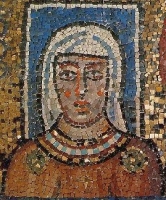
A Christian woman, she fell into a life of sin for many years, had a conversion experience, returned to her faith, and lived the rest of her life as a penitent hermit in the deserts of Thebaid, Egypt. Living the rugged like of a desert hermit, no one knew she was a woman until she died and they were preparing her for burial.
Alexandria, Egypt
491 of natural causes
https://catholicsaints.info/saint-theodora-the-penitent/
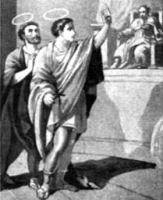
Brother of Saint Protus of Rome. Servant in the house of Saint Eugenia in Rome, Italy. Arrested and martyred for their faith. Pope Saint Damasus wrote their epitaph.
• burned alive c.257 at Rome, Italy
• buried in the cemetery of Saint Basilla, Rome
• relics transferred to the church of San Giovanni dei Fiorentini
https://catholicsaints.info/saint-hyacinth-of-rome/
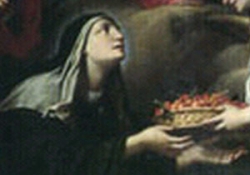
Sperandia
Relative of Saint Ubaldus Baldassini. Benedictine nun at Cingoli, Ancona, Papal States (modern Italy). Abbess. Mystic who received visions, one of whom told her to dress in a tanned pigskin with the bristles against her skin, and to use a chain for a belt.
• 1276 of natural causes
• body incorrupt
Cingoli, Italy
https://catholicsaints.info/saint-sperandea/

Brother of Saint Hyacinth of Rome. Servant in the house of Saint Eugenia in Rome, Italy. Arrested and martyred for their faith. Pope Saint Damasus wrote their epitaph.
• burned alive c.257 at Rome, Italy
• buried in the cemetery of Saint Basilla, Rome
• relics transferred to the church of San Giovanni dei Fiorentini
https://catholicsaints.info/saint-protus-of-rome/

Mercedarian friar. Imprisoned by Saracens in La Muela, Zaragoza, Spain, and ordered by them to renounce Christianiity. Instead, Baldassarre began preaching against them, their vices, their wickedness. He was then executed with 16 other Christians whose names have not come down to us. Martyr.
with arrows in 1588
https://catholicsaints.info/blessed-baldassarre-velasquez/
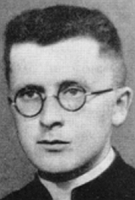
Priest in the diocese of Trieste, Italy. Martyr.
7 September 1912 in Piran, Istarska, Italy (now in Croatia)
11 September 1946 at Villa Gardossi, Krasica, Istarska, Italy (now in Croatia)
4 October 2008 by Pope Benedict XVI
https://catholicsaints.info/blessed-francesco-giovanni-bonifacio/
May have been a soldier in the Theban Legion. Martyr.
• relics re-discovered on 11 September 1248 and enshrined at the church of San Fedele
• church re-built in 1533 and re-named for Santi Gusmeo and Matthew
• relics re-enshrined under the main altar in a marble urn in 1637
Gravedona sul Lario, Italy
https://catholicsaints.info/saint-matthew-of-gravedona-sul-lario/
May have been a soldier in the Theban Legion. Martyr.
• relics re-discovered on 11 September 1248 and enshrined at the church of San Fedele
• church re-built in 1533 and re-named for Santi Gusmeo and Matthew
• relics re-enshrined under the main altar in a marble urn in 1637
Gravedona sul Lario, Italy
https://catholicsaints.info/saint-gusmeo-of-gravedona-sul-lario/
10 September as one of the 205 Martyrs of Japan
Son of Blessed Cosmas Takeya Sozaburo and Blessed Agnes Takeya in the archdiocese of Nagasaki, Japan. Martyred at age 12.
1610 in Nagasaki, Japan
beheaded on 11 September 1622 in Nishizaka, Nagasaki, Japan
7 May 1867 by Pope Blessed Pius IX
https://catholicsaints.info/blessed-franciscus-takeya/
Bonincontro
A spiritual student of Saint Francis of Assisi, Bonincontri was one of the first Franciscan friars, helping found the Castrum Rudilphi convent in the diocese of Bourges, France. Known as a miracle worker.
latter 12th century
1230 of natural causes
https://catholicsaints.info/blessed-bonincontri-of-san-miniato/
Aemilian of Vercelli
Lived as a hermit for 40 years. Bishop of Vercelli, Italy. Attended three synods held in Rome, Italy by Pope Saint Symmachus. Lived to be over 100.
• 520 in Vercelli, Italy of natural causes
• relics translated in 1181
• relics translated in late 17th century
https://catholicsaints.info/saint-emilian-of-vercelli/
10 September as one of the 205 Martyrs of Japan
Young layman catechist in the archdiocese of Nagasaki, Japan. Dominican tertiary. Martyr.
1601 in Nagasaki, Japan
beheaded on 11 September 1622 in Nishizaka, Nagasaki, Japan
7 May 1867 by Pope Blessed Pius IX
https://catholicsaints.info/blessed-gaspar-koteda/
10 September as one of the 205 Martyrs of Japan
Son of Blessed Marina Tanaura in the archdiocese of Nagasaki, Japan. Martyred at age 7.
1615 in Nagasaki, Japan
beheaded on 11 September 1622 in Nishizaka, Nagasaki, Japan
7 May 1867 by Pope Blessed Pius IX
https://catholicsaints.info/blessed-petrus-kawano/
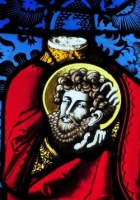
Servant of Saint Regula and Saint Felix of Zurch. During the persecutions of Maximian Herculeaus the two fled to Switzerland. They were found there near Zurich. Martyr.
3rd century near Zurich, Switzerland
https://catholicsaints.info/saint-essuperanzio-of-zurich/
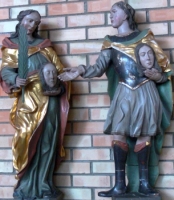
Sister of Saint Felix of Zurich. During the persecutions of Maximian Herculeaus the two fled to Switzerland. They were found there near Zurich. Martyr.
martyred in the 3rd century near Zurich, Switzerland
https://catholicsaints.info/saint-regula-of-zurich/

Brother of Saint Regula of Zurich. During the persecutions of Maximian Herculeaus the two fled to Switzerland. They were found there near Zurich. Martyr.
3rd century near Zurich, Switzerland
https://catholicsaints.info/saint-felix-of-zurich/
20 June as one of the Irish Martyrs
Priest in the archdiocese of Armagh, Ireland.
Irish
martyred on 11 September 1649 in Drogheda, Louth, Ireland
27 September 1992 by Pope John Paul II in Rome, Italy
https://catholicsaints.info/blessed-thomas-bathe/
20 June as one of the Irish Martyrs
Dominican priest. One of the Irish Martyrs.
Irish
11 September 1649 in Drogheda, Louth, Ireland
27 September 1992 by Pope John Paul II in Rome, Italy
https://catholicsaints.info/blessed-dominic-dillon/
20 June as one of the Irish Martyrs
Dominican priest.
Irish
martyred on 11 September 1649 in Drogheda, Louth, Ireland
27 September 1992 by Pope John Paul II in Rome, Italy
https://catholicsaints.info/blessed-richard-overton/
20 June as one of the Irish Martyrs
Jesuit priest. One of the Irish Martyrs.
Irish
11 September 1649 in Drogheda, Louth, Ireland
27 September 1992 by Pope John Paul II in Rome, Italy
https://catholicsaints.info/blessed-john-bathe/
20 June as one of the Irish Martyrs
Augustinian priest.
Irish
martyred on 11 September 1649 in Drogheda, Louth, Ireland
27 September 1992 by Pope John Paul II in Rome, Italy
https://catholicsaints.info/blessed-peter-taaffe/
Archbishop of Lyon, France. Worked with, and was highly praised by Saint Sidonius Apollinaris. Bishop Patiens donated all his income to the poor.
c.491
https://catholicsaints.info/saint-patiens-of-lyon/
Almer, Almire
Hermit at Gréez-sur-Roc, France.
Auvergne, France
c.560 at Gréez-sur-Roc, France
https://catholicsaints.info/saint-almirus/
Grandson of Saint Romaricus. Monk and then abbot of Remiremont Abbey in eastern France.
c.670
https://catholicsaints.info/saint-adelphus-of-remiremont/
Thousands of people were murdered in the anti-Catholic persecutions of the Spanish Civil War from 1934 to 1939. I have pages on each of them, but in most cases I have only found very minimal information. They are available on the CatholicSaints.Info site through these links:
• Blessed José Piquer Arnáu
• Blessed Josep Pla Arasa
• Blessed Lorenzo Villanueva Larrayoz
• Louis IV, Landgrave of Thuringia
CatholicSaints.Info Portable Edition